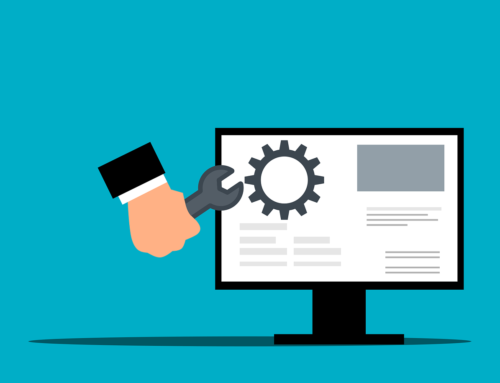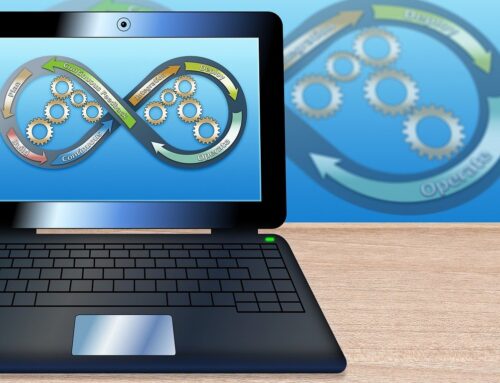What is DevOps?
The term DevOps is a combination of two words namely Development and Operations. DevOps is a practice that allows a single team to manage the entire application development life cycle, that is, development, testing, deployment, operations. The aim of DevOps is to shorten the system’s development life cycle while delivering features, fixes, and updates frequently in close alignment with business objectives.
DevOps seeks to optimize the development processes not for the one stage but for the complete delivery chain across the entire software delivery lifecycle from the proposal for a new product to the development and deploying it into production.
DevOps Lifecycle
DevOps characterizes an agile connection between operations and development. It is a cycle polished by the development group and operational specialists together from the starting to the last phase of the item. Learning DevOps isn’t finished without understanding the DevOps lifecycle stages. The DevOps lifecycle incorporates seven stages as given underneath:
•Continuous Development
•Continuous Integration
•Continuous Testing
•Continuous Monitoring
•Continuous Feedback
•Continuous Deployment
•Continuous Operations
To deliver faster results, developers must be fully aware of all the different phases of the DevOps lifecycle. If they aren’t, the entire development process can become complex and time-consuming. Here is a complete breakdown and analysis of each component of the DevOps lifecycle.
DevOps lifecycle phases
1.Continuous Development
This phase involves the planning and coding of the software. The vision of the project is decided during the planning phase. And the developers begin developing the code for the application. There are no DevOps tools that are required for planning, but there are several tools for maintaining the code.
2.Continuous Integration
Continuous integration (CI) includes different steps related to the execution of the test process. Along with this, clients also provide information to be incorporated for adding new features to the application. This phase experiences continuous integrations of new code functionalities with the existing source code. Due to continuous development, the updated code seamlessly integrates within the entire system.
3.Continuous Testing
The Continuous Testing phase involves the phase in which the developed code is continuously tested to look for bugs, defects and flaws. This is also the phase where the usability of the software is tested using the set of best practices for QA, and it is determined whether the software meets the specifications defined by the client. The outcome from the testing is shared with the developers to make changes in the product.
4.Continuous Monitoring
It is a crucial phase in the DevOps lifecycle where the use of applications or products has been monitored. In this phase, the working of the application or product is being monitored and recorded carefully by using tools such as Splunk, ELK Stack, Nagios, etc. After that, problem areas are identified. And if there are any problems, then it will give to the development team to solve that problem and detect and fix the bugs. This phase will focus on optimal performance and service uptime.
5.Continuous Feedback
CI and CD tend to get the glory when people talk about DevOps, but an equally important factor is Continuous Feedback. The whole point of DevOps is to release new features and fixes as quickly as possible so that the organisation can get feedback from customers, stakeholders and analytics as quickly as possible to make better decisions when designing the next set of changes. The whole point is to achieve a strong Continuous Feedback loop to develop a better product.
6.Continuous Deployment
In this phase, the final application code is deployed to the production servers. The critical process in this phase is Configuration Management, which is carried out preciously to deploy application code on all servers. Developers establish an application’s performance and consistency gradually and curates. They release the code to the servers, schedule the updates for all servers, whereas these configurations are kept consistent throughout the production process. Containerization tools helps in continuous deployment through the Configuration Management process.
7.Continuous Operations
This phase is primarily dedicated to minimizing, or rather optimizing, the need for planned downtime, such as scheduled maintenance. The best practices to do so include making sure that no code submission gets built without passing all test harnesses, small frequent releases of the application, deploying database changes first, without the corresponding software changes that depend on it, creating the development and production environments through automated tools, leveraging the power of A/B testing when incorporating new features in the application, and such.
In Conclusion
These DevOps stages are done in a circle continuously till you accomplish the ideal item quality. In this way, practically the entirety of the significant IT organizations has moved to DevOps for building their items.
DevOps is a practical and valuable asset for organizations because of its numerous measurable benefits through continuous integration and continuous delivery without compromising on the quality of software products or services.
Contact us at Realxposure to learn more about DevOps application in your business today!







Leave A Comment